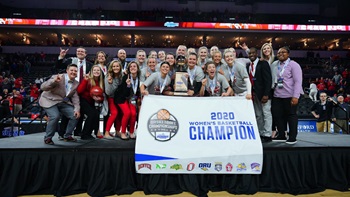Federal Agency Recommends Changes to USD Building but Concludes it Can be Occupied
“We found no reason the building can’t be occupied,” Greg Burr, industrial hygienist with NIOSH, told USD executives in a briefing Wednesday morning. However, he said the building’s ventilation system is inadequate, resulting in poor control of temperature and humidity.
Air that’s too wet or too dry can cause health complaints in some people and can be dangerous for those with asthma, the NIOSH team reported.
Noteboom Hall was built in 1954 as a dormitory and re-purposed in 1968 for offices. Employees have filed complaints that the building is making them sick. Earlier this year a former employee told the Sioux Falls Argus Leader that mold in the building gave her a wide range of health conditions including hives, hair loss, migraines and sinus infections.
After inspecting the entire building and conducting tests in many areas, the NIOSH team said only two small areas of mildew were spotted along with one area of dampness on a wall.
“That (mold) is not an issue here,” said Dr. Elana Page of NIOSH. “You don’t have an existing mold issue, you have an existing ventilation issue.
“There’s nothing there to permanently affect your health,” she told a meeting of building occupants. “Ventilation will help people with asthma. The other symptoms are just symptoms – they are not indications of a permanent problem.”
Page said people in poorly ventilated buildings commonly complain of headaches, itchy eyes, and nasal stuffiness. “These complaints are common in the general population, and are common in good, well-ventilated buildings,” she said.
Science does not support the claims that poor ventilation causes migraine headaches, fibromyalgia, chronic fatigue, bladder infections, kidney infections, hives or strep throat, she said.
Replacing the 61-year-old heating and air conditioning system would improve conditions, the NIOSH team said, but it likely would cost millions of dollars and require structural changes.
“Work with what you have, and make it as good as it can possibly be,” Page said.
“Spending millions of dollars on an old building that we know we want to replace just doesn’t make sense,” said USD President James W. Abbott. “We are working on a long-term plan to build new space that will allow us to move people out of less efficient buildings.
“In the meantime, we will follow the NIOSH recommendations to make the building as comfortable as possible,” he said.
NIOSH will provide a written report within 10 days, Page said, including the following recommendations:
- Create a safety and health committee that includes building employees.
- Perform regular building inspections.
- Remove all carpet and upholstered furniture.
- Eliminate clutter and all books and papers that are not essential.
- Keep office doors open as much as possible to encourage air circulation.
- Continue using dehumidifiers and keep them running at night and on weekends.
- Ban all scented products including cleaners, air fresheners and perfumes.
- Use only environmentally friendly cleaning products.
- Vacuum with HEPA filters to catch more dust and allergens.
- Minimize pesticide use.
- Consider newer window air conditioners that would circulate more outside air.


